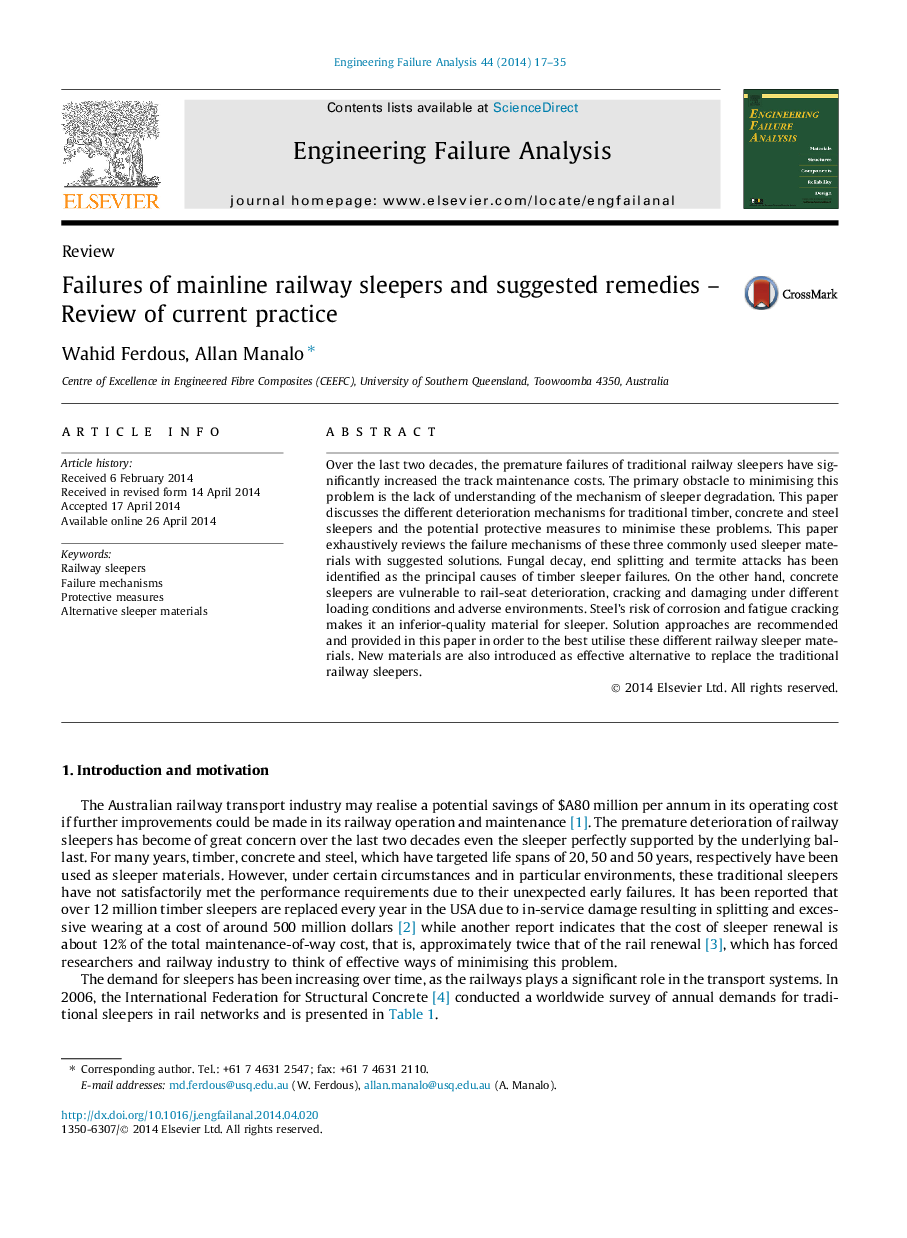| Article ID | Journal | Published Year | Pages | File Type |
|---|---|---|---|---|
| 7168347 | Engineering Failure Analysis | 2014 | 19 Pages |
Abstract
Over the last two decades, the premature failures of traditional railway sleepers have significantly increased the track maintenance costs. The primary obstacle to minimising this problem is the lack of understanding of the mechanism of sleeper degradation. This paper discusses the different deterioration mechanisms for traditional timber, concrete and steel sleepers and the potential protective measures to minimise these problems. This paper exhaustively reviews the failure mechanisms of these three commonly used sleeper materials with suggested solutions. Fungal decay, end splitting and termite attacks has been identified as the principal causes of timber sleeper failures. On the other hand, concrete sleepers are vulnerable to rail-seat deterioration, cracking and damaging under different loading conditions and adverse environments. Steel's risk of corrosion and fatigue cracking makes it an inferior-quality material for sleeper. Solution approaches are recommended and provided in this paper in order to the best utilise these different railway sleeper materials. New materials are also introduced as effective alternative to replace the traditional railway sleepers.
Related Topics
Physical Sciences and Engineering
Engineering
Industrial and Manufacturing Engineering
Authors
Wahid Ferdous, Allan Manalo,
